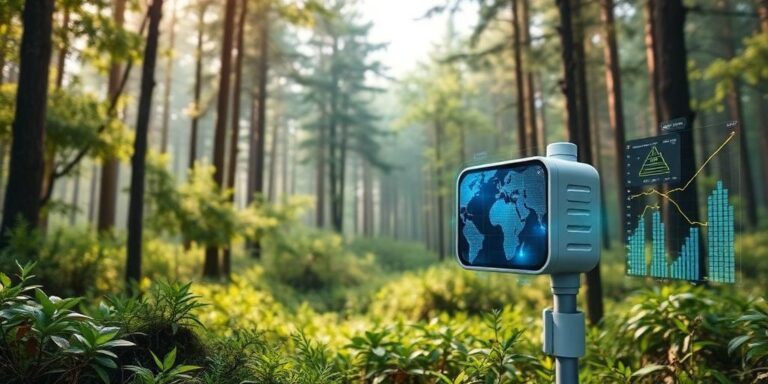Environmental IoT: Monitoring Climate Change and Wildlife (2027)
In 2027, the Internet of Things (IoT) has become an indispensable tool in environmental monitoring, providing unprecedented insights into climate change and wildlife behavior. This article explores how Environmental IoT is deployed, its benefits, and the challenges it faces.
What is Environmental IoT?
Environmental IoT refers to the use of interconnected sensors, devices, and networks to monitor and collect data about the natural environment. These devices are deployed in diverse ecosystems, from dense forests to polar regions, gathering real-time data on various parameters.
Key Applications
Climate Change Monitoring
- Temperature and Humidity Sensors: Deployed to track changes in atmospheric conditions, providing data to climate models.
- Air Quality Monitors: Measure pollutants and greenhouse gases, helping to identify pollution sources and assess the impact of mitigation strategies.
- Water Level Sensors: Monitor sea levels, river flows, and groundwater levels to assess the impact of rising temperatures and changing precipitation patterns.
Wildlife Monitoring
- GPS Tracking Collars: Fitted on animals to track their movements, migration patterns, and habitat use.
- Acoustic Sensors: Capture animal vocalizations, providing insights into behavior, population size, and species interactions.
- Camera Traps: Remotely triggered cameras capture images and videos of wildlife, enabling monitoring of species presence and abundance.
Benefits of Environmental IoT
- Real-Time Data Collection: Provides continuous, up-to-the-minute information, enabling rapid response to environmental changes.
- Remote Monitoring: Allows access to data from remote and inaccessible locations, reducing the need for physical presence.
- Data-Driven Decision Making: Enables evidence-based conservation and management strategies.
- Improved Accuracy and Precision: Minimizes human error and bias in data collection.
- Early Warning Systems: Detects early signs of environmental threats, such as pollution outbreaks or illegal wildlife activities.
Challenges and Considerations
- Power Management: IoT devices often rely on batteries or solar power, requiring efficient energy management strategies.
- Connectivity: Ensuring reliable connectivity in remote areas can be challenging, often requiring satellite or mesh network solutions.
- Data Security: Protecting the integrity and privacy of collected data is crucial to prevent misuse.
- Scalability: Deploying and managing large-scale IoT networks requires robust infrastructure and data management systems.
- Cost: The initial investment in IoT devices and infrastructure can be substantial, requiring careful cost-benefit analysis.
Case Studies
Great Barrier Reef Monitoring
In 2027, the Great Barrier Reef employs a network of underwater sensors to monitor water temperature, salinity, and coral health. This data helps scientists understand the impact of climate change and guide conservation efforts.
Amazon Rainforest Surveillance
Environmental IoT devices are used to detect illegal logging and poaching activities in the Amazon Rainforest. Acoustic sensors and camera traps alert authorities to suspicious activities, enabling rapid response.
The Future of Environmental IoT
As technology advances, Environmental IoT will become even more sophisticated and integrated. Future developments may include:
- AI-Powered Analytics: Using artificial intelligence to analyze large datasets and identify patterns and trends.
- Drone-Based Monitoring: Deploying drones equipped with sensors and cameras for aerial surveys and data collection.
- Citizen Science Integration: Engaging the public in data collection through smartphone apps and DIY sensors.
Conclusion
Environmental IoT has revolutionized the way we monitor and understand our planet. By providing real-time data and remote monitoring capabilities, it enables more effective conservation and management strategies. As technology continues to evolve, Environmental IoT will play an increasingly critical role in addressing the challenges of climate change and protecting our planet’s biodiversity.




